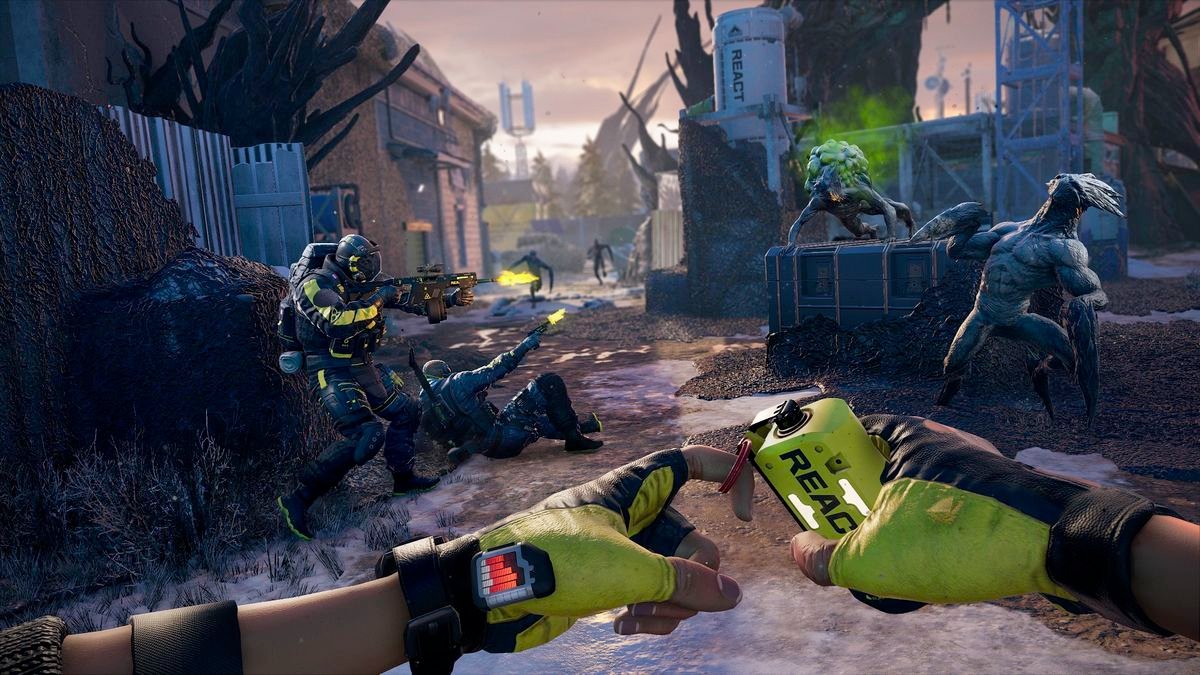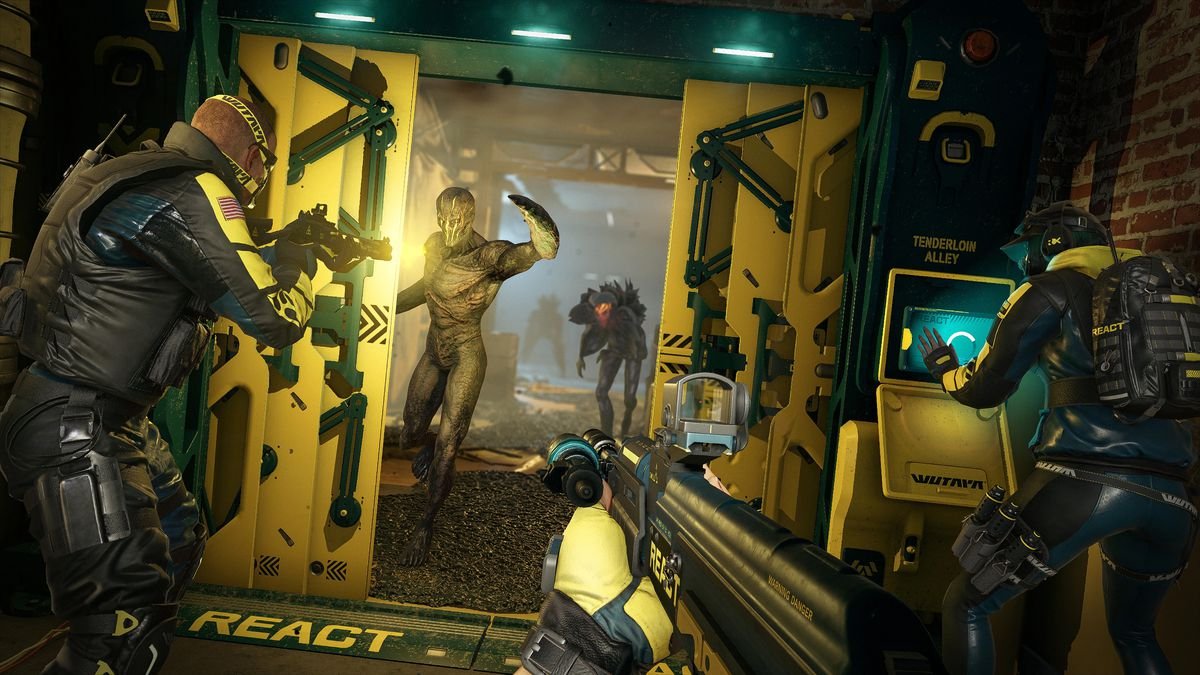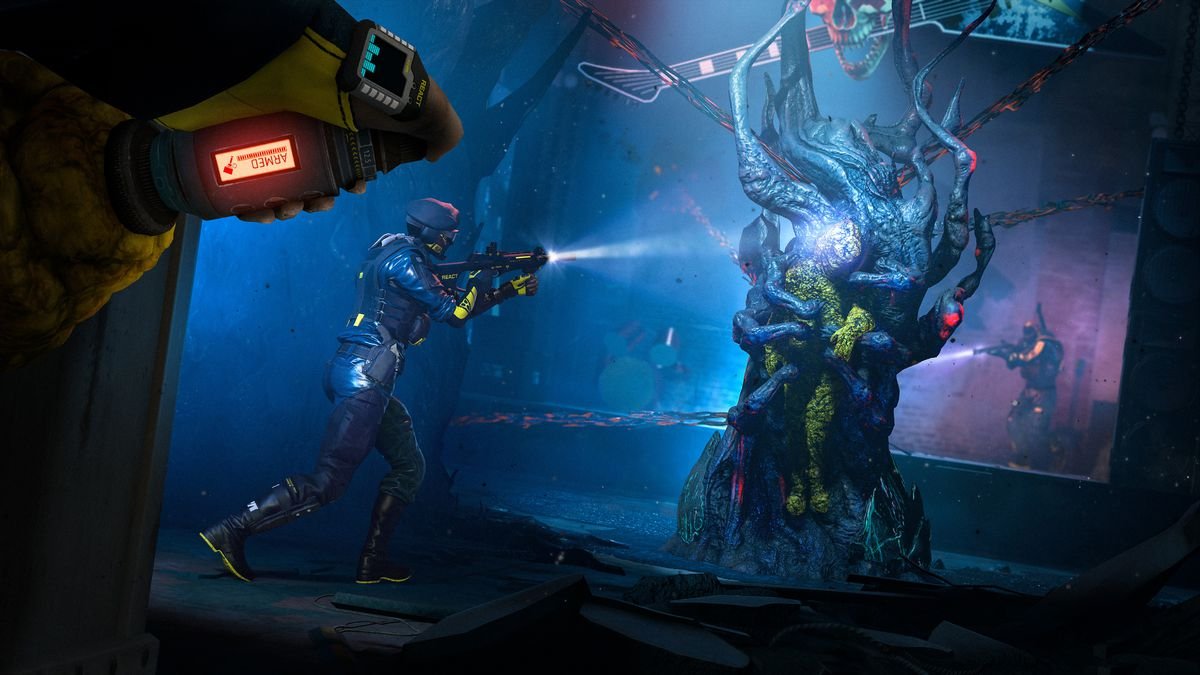Playing Rainbow Six Extraction, Ubisoft’s co-op vs. AI spinoff of its competitive tactical shooter Rainbow Six Siege, is like playing all the worst parts of a very good game. The mechanics remain outstanding, but all the new content feels like an endless list of RPG side quests that feel destined to lead to something better but never actually do.
In Extraction, players form squads of up to three to complete missions called Incursions, which can take place in twelve different areas and have three random objectives every time you load into a new one. Each player selects an Operator and a loadout, and earns XP for their overall account and the specific Operator they’re using.
Extraction brings back many favorites from the Siege roster, including Smoke, Ela, Sledge, and Finka, to name a few, for a total of 18 playable Operators. The game also includes a few other non-playable operators like Mira, Ash, and Thermite to help drag you through the cutscenes and missions, but they mostly serve as a reminder that Siege’s characters just aren’t very charming.
This game is deadly serious, which is a real shame given that its ridiculous story could have been fertile ground for goofiness. Extraction takes place in an alternate world where some of the United States’ biggest cities (and also Alaska) are overrun by an alien race known as the Archæans and only a team of Rainbow Six operators can save the day.

Image: Ubisoft Montreal/Ubisoft
With a variety of fully-voiced Operators, Extraction might seem tailor-made for in-game banter, but there’s none to speak of. Every moment of every mission is as silent as a crypt — unless, of course, a character is calling out their next tactical move, like shouting “reloading” for the 400th time in a mission. This dour tone is more or less tolerable in the early stages of the game, but by hour 20 all I wanted was for someone to make one single joke after I killed alien number 1,159.
Putting the drab tone aside, at least the shooting feels great. All of Extraction’s underlying mechanics come from Rainbow Six Siege, and as far as realistic sim-lite shooting games go, it’s about the best there is. Extraction has an arsenal of over a dozen guns, each of which has a unique kick and enough recoil to make learning to control your spray an invaluable skill. It’s a shame Ubisoft decided to keep Siege’s weapon restrictions in place, however, which means each Operator has a character-specific arsenal that you can’t mix and match.
Like its source material, Extraction also looks incredible. Thin supporting walls get ripped with gunfire, sheetrock and concrete splinters wherever you shoot, and the creeping Sprawl, an alien-black goo that oozes across the ground and slows your movement, covers everywhere your bullets haven’t touched. The levels themselves rarely feel unique, but they were solid enough that I was never frustrated to return again. Unfortunately, I can’t say the same for the enemies inside them.
To put it simply: Extraction’s aliens are boring. Every area you enter during an Incursion has several spawning pods called Hives. Hives will spawn Archæans if they’re alerted and spread Sprawl across the ground. Along with the Hives, you’ve got various enemies like Grunts, which are basically zombies; Spitters, which shoot at you; Bashers, which hit you a bunch; and the occasional Apex, which spawns other enemies. There are nine other enemy variants, none of which are exciting enough to mention here.

Image: Ubisoft
Each enemy has a weak spot, and stealth kills will let you take out the enemy without them alerting their friends. This means that almost all of Extraction is spent slowly crouch-walking through similar-looking corridors, firing one shot at a time. If this were intended to be a stealth game, that could be a compelling source of tension. But the discovery mechanics are finicky and unreliable. Occasionally, an errant footstep would give away my position from two rooms away — more frequently, I could walk straight into touching-distance of an Archæan before it had any idea I was there. This ends up making the stealth feel slipshod rather than challenging.
By the time I had played for nearly 20 hours, I simply ran through levels, knowing exactly when and where to step to avoid alerting enemies. When I did happen to attract the attention of a horde of Archæans — a moment that should feel exciting and chaotic — the game instead turned into a muddy mess. Enemy animations stutter across the screen, making headshots lopsided and awkward, and I too often got pinned against the game’s awkwardly designed rooms and bludgeoned to death with no hope of survival.
When your Operator dies during an Incursion, they’re placed on the MIA list, which is one of Extraction’s better mechanics. The next time you return to that specific zone, one of your objectives will be to rescue the missing Operator, which is done by completing an entertaining little minigame where you pull them from an alien tree. Until you complete the rescue, that Operator is locked and unavailable for further Incursions.
In order to keep your Operator from going MIA, you can also choose to extract at any point in the middle of an Incursion, no matter how many of the three objectives you have completed. There’s no price for an early extraction other than missing out on whatever XP the rest of the mission had to offer, so this really never feels like balancing an interesting risk against a reward.

Image: Ubisoft
Extraction also features a challenge system, a la Call of Duty, that requires you to use specific weapon attachments or abilities. This system is called Studies, and is as close as Extraction gets to specific missions. They’re location-specific, but because there aren’t unique mechanics between the locations, each Study is basically interchangeable with the others. There are over 100 of these in the game and they’re (sadly) the best way to level up.
But the Studies system — like everything else in Extraction — is a grind. For more than 20 hours, I loaded into Incursions, did my three Study challenges, completed my three random objectives, and extracted. At the end of each run, I’d watch the XP counter tick upward toward a new piece of equipment I knew I wouldn’t use. Then I’d start the whole thing again.
Because all of the progression is linear, rewards are just handed to you in a set order, and rarely make you feel significantly stronger. In other words, Extraction is a very flat experience. With more fleshed-out missions, this could be a great game, but as it stands, the system lacks the peaks and valleys of random loot that help make most grindy PVE games fun. The promise of an unexpected high is what makes the grinding worth it. Random drops on guns, upgrades, or any equipment at all could have gone a long way toward making me want to queue up for just one more Incursion for a chance at a rare reward.
Even worse, all these levels and upgrades always feel like they’re pushing you toward something cool, but once you get to the endgame, it turns out they never were. The “end game” is just more of the same Incursions, but with harder difficulties, a smaller pool of Operators (which changes every few days), and some modifiers.
Extraction’s grinding is no more or less rewarding than a clicker game. Its best asset is its underlying mechanics, which make for a solid shooter if you can find the right group of friends with which to play it. In the end, it’s not much more than a way to kill time until better, more interesting games arrive.
Rainbow Six Extraction will be released on Jan. 20 on PlayStation 4, PlayStation 5, Google Stadia, Xbox One, and Xbox Series X, and is available on Xbox Game Pass for all platforms. It is also available on Windows PC via Steam and the Ubisoft Connect store. The game was reviewed on PC using a code provided by Ubisoft. Vox Media has affiliate partnerships. These do not influence editorial content, though Vox Media may earn commissions for products purchased via affiliate links. You can find additional information about Polygon’s ethics policy here.
























































